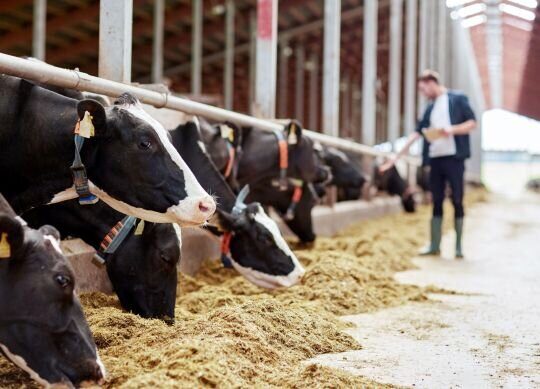Will Higher Feed Prices Mean Higher Milk Prices?
Markets always have a tendency to fall faster than they increase. That was very evident again recently as Class III futures plummeted over a three-day period. Cheese prices fell as buyer’s needs for fresh cheese were filled temporarily. A price void developed under the market as buyers leap frogged over each other trying to get their hands on available loads before price moved too much higher. This is similar to what takes place at a farm auction when a few people want something and are willing to continue to run the price up. The daily spot market is a price auction with buyers and sellers doing a similar thing, but for a different reason. Even though the spot market trades for a limited time each day and sometimes can move more than the underlying fundamentals for a period of time, it is an accurate representation of supply and demand.
Weakening cheese prices were compounded by the Biden administration discontinuing the Farmers to Families Food Box program. Secretary of Agriculture, Tom Vilsack, indicated that the USDA is focused on distributing food through initiatives already in place such as expanding food stamps benefits and increasing food purchases through existing government food programs such as the Supplemental Nutrition Assistance Program (SNAP) and the Special Supplemental Assistance Program for Women, Infants, and Children (WIC). The markets did not take the news kindly.
However, even with the recent steep decline of futures, prices bounced back after three days. Buyers of cheese decided price had declined sufficiently to take advantage of lower prices. Whether that will continue will be up to the supply/demand balance of the market. Demand from the food service industry has been improving more rapidly than was anticipated. This required more product to move to that area of demand. How much of this increase in restaurant demand will reduce what has been purchased over the past year through retail will be seen. Retail demand may slow as less meals again are consumed at home.
Another aspect of the market that has really moved to the forefront is the concern over high feed prices and what the impact will have on milk production. Generally, significantly higher feed prices will result in heavier culling and lower milk production as farms push the pencil and trim what they can and/or rebalance rations that might not be quite as conducive to stronger milk production. However, higher grain prices meaning higher milk prices, may not be a completely accurate correlation. There are many variables involved in the equation. For smaller farms, that correlation may be completely inaccurate if they took part in the Dairy Margin Coverage (DMC) program and took the $9.50 income over feed level. If monthly income over feed falls below that level, money will be received to make up the difference. However, this is not always as good as it sounds.
The USDA uses an average price for corn and a blend of premium and supreme alfalfa hay for the month. Then adds to that the soybean meal average from for the month by rail in Central Illinois. We all know that average prices are not what is the usual at most locations. This can change an income over feed price much like the Producer Price Differential can change the milk check. When feed supply gets tight, cash prices for that feed can go through the roof in some areas. Nevertheless, the DMC program does provide money to help make up some of the difference which will result in farms keeping cows and pushing milk production.
Large farms may be at a disadvantage with the DMC program, but may have the advantage of lower income over feed costs through various means and may have the advantage of higher milk production per cow as a result of various other management benefits. What generally tends to happen is that when milk prices are higher, farmers push milk production to take advantage of those higher prices. When milk prices are low, farmers push milk production to make up for lost income. That has been the nature of the business and will continue to be. So whatever, happens the rest of this year, farmers will compensate and do the best they can to product a quality product.
Adapted from Robin Schmahl for Dairy Herd Management.



